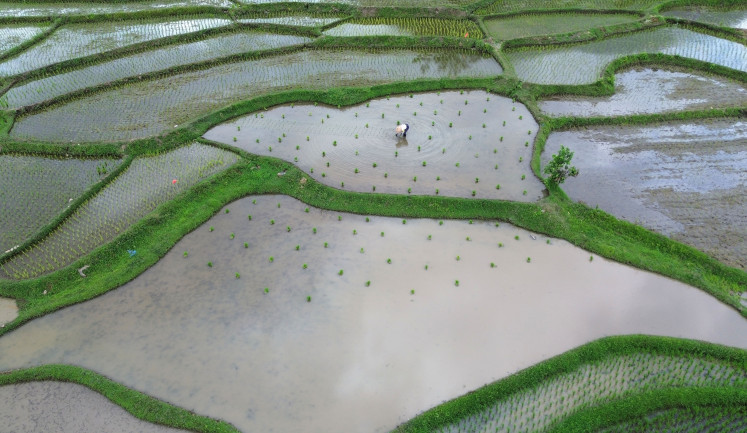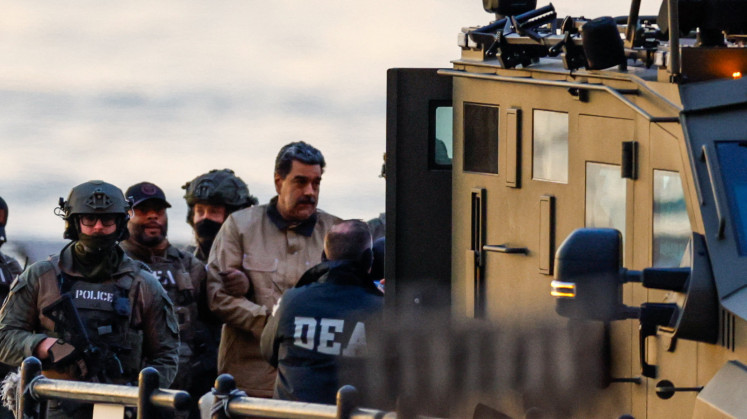Popular Reads
Top Results
Can't find what you're looking for?
View all search resultsPopular Reads
Top Results
Can't find what you're looking for?
View all search resultsThe race to develop a COVID-19 vaccine: Why does it take so long?
Almost all experts agree that even a 18-month target for a COVID-19 vaccine production is too optimistic.
Change text size
Gift Premium Articles
to Anyone
P
resident Joko “Jokowi” Widodo recently urged the Padjadjaran University research team to expedite the trial phase for a potential COVID-19 vaccine to just three months, but clinical trial coordinator professor Kusnandi Rusmil said it would be impossible, given the strict World Health Organization procedures that must be followed for safety and efficacy.
Almost all experts agree that even an 18-month target for a COVID-19 vaccine is too optimistic, so the best-case scenario could see a working vaccine in the second or third quarter of 2021. History shows it took 26 years to develop a vaccine for the human papillomavirus and 25 years to secure one for the rotavirus.
Fortunately, in the case of COVID-19, scientists already have a big head start, as they are relying on groundwork from Severe Acute Respiratory Syndrome (SARS) and Middle East Respiratory Syndrome (MERS) outbreaks in 2003 and 2012, respectively. This isn’t the first coronavirus for which they’ve tried to make a vaccine and focused a lot of academic research on.
SARS and SARS-CoV-2, the virus that causes COVID-19, are roughly 80 percent identical. So, researchers already know a good target for a vaccine: the spike protein that sits on the surface of the virus, and especially the part that binds to human cells, enabling the virus to gain entry. The scientists are already on the fast-track and they can move to focus on other crucial parts ahead: the trials.
As a rule, researchers don’t begin testing experimental vaccines on people until after rigorous safety checks. It starts with a preclinical toxicology study on a laboratory scale that assesses whether a drug is safe to use and is tested on animals. That usually takes three to six months depending on the study’s design.
There are several strategies normally used to develop a vaccine: an inactivated virus, a live attenuated virus or heavily weaken the virus’ strain, and pull out the virus genetic sequence, DNA or ribonucleic acid (RNA).
If the evaluation is successful, the candidates go through to the three phases of testing in people, also known as clinical trials. Each phase has its special treatments, duration and regulations.
The most time-consuming step is testing because researchers have to wait for enough volunteers to be exposed to a virus naturally. The vaccine must be given to a much larger group and compared to an unvaccinated control group to see whether it really prevents the disease. Such a test needs thousands of people to assess the safety and rare adverse events, while simultaneously, vaccine manufacturing consistency is confirmed.
The final part before the vaccine can be launched to the market is government approval. It sounds like a bureaucratic formality, but we need to keep in mind that its rubber stamp could cost lives. Typically, it takes scientists and advisory committees a full year to review the studies to make sure that the vaccine is really safe and effective as it is.
So, when the regulator expedites the process, manufacturers start to speed up the deployment and what’s next? It doesn’t mean we’re going to get it because millions of people could be in line before us. Otherwise, before it gets massed produced, doctors, nurses and other essential workers could get vaccinated right away.
We are dealing with a long, complex and expensive process. Normally, less than 10 percent of drug trials are ultimately approved. The rest fail because of lower efficacy, wrong kind of immune response, too many side effects that weren’t previously noticed and sometimes, they can even exacerbate a disease.
The manufacturing task is overwhelming, costing at least three times in conventional pharmaceutical factories. That’s one of the reasons why most of the phase III vaccine candidates all over the world chose to develop DNA or RNA vaccines. It’s because RNA vaccines don’t need to be cultured in large quantities and then purified; they are much cheaper, easier and faster to produce.
However, they are riskier than other established strategies as not one has ever been made for humans before. The question about safety and efficacy then lingers.
Starting Aug. 11, as many as 1,620 volunteers aged 18-59 take part in the phase III clinical trials led by the School of Medicine of Padjajaran University, the collaborating project of state-owned pharmaceutical holding company Bio Farma and Chinese company Sinovac Biotech to secure access to vaccine candidates using the inactivated virus method.
Furthermore, in the coming months, homegrown health company Kalbe Farma will be partnering with Genexine for the phase II clinical trials of the South Korean firm’s DNA vaccine.
Meanwhile, a national consortium under the Research and Technology Ministry is developing its own vaccine called Merah Putih (Red and White), the colors of the Indonesian flag. Scientists in the project, led by the Eijkman Institute for Molecular Biology, are using the recombinant protein methods to deploy the virus in the preclinical phase.
The Indonesian government is aware it has to cover its large population of some 270 million people and it’s not enough to just rely on one source of vaccine.
Despite these various efforts, targets and different approaches to developing the vaccines, we have one big goal together: to successfully eradicate COVID-19. Whichever company or university wins the race, it would be better to swiftly transfer its biotechnology across borders. It can lead to the production of more than one vaccine with different markets and prices.
As citizens, the simplest contribution we can give is supporting the government; remove our biases and stigma that prompt us to consider volunteers of vaccine trials “guinea pigs”, especially if vaccine trials do not live up to expectations. Such a result is very normal as developing biologic products has a 42 percent failure rate in phase III of clinical trials.
As no vaccine will be available anytime soon, the most valuable thing that everyone can do right now is to follow public health recommendations. Therapeutic drugs might help fight COVID-19, at least they could lower the number of hospital admissions and help people recover faster, but still, it’s better to take as many precautions as we can to prevent ourselves from infection: wear a mask, frequently wash your hands and keep social distancing.
***
The writer is a pharmacist who formerly worked for a giant multinational pharmaceutical company as a safety data management specialist.










